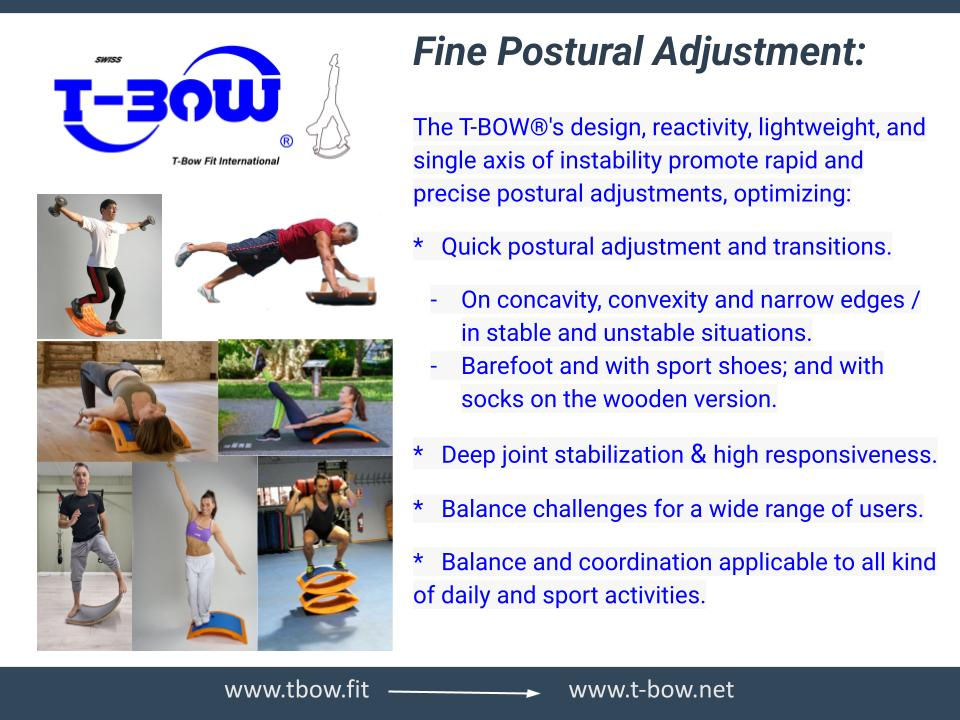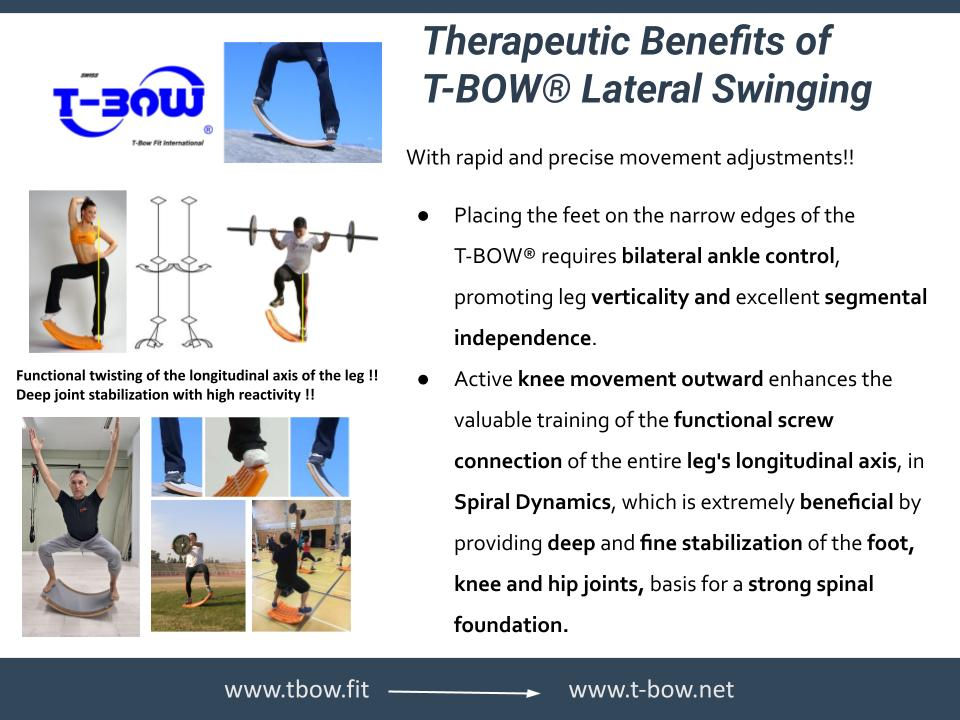BASICS OF UNSTABLE TRAINING with T-BOW®
- T-BOW TRAINING AND THERAPY
- Sep 24, 2023
- 2 min read
Updated: Aug 10

With a single unbalance axis, perfectly balanced, very low weight, high elasticity and resistant to static-dynamic loads of more than 350 kg, the T-BOW® is reactive to the slightest movement, changing its inertia quickly, thus optimizing a Postural and coordinative adjustment with a high level of precision, both in a stable curved-convex step position, as well as in the unstable concave rocker and concave/convex double T-BOW® positions.

T-BOW® Fine Postural Adjustment
The T-BOW®'s design, reactivity, lightweight, and single axis of instability promote rapid and precise postural adjustments, optimizing:
* Quick postural adjustment and transitions.
- On concavity, convexity and narrow edges / in stable and unstable situations.
- Barefoot and with sport shoes; and with socks on the wooden version.
* Deep joint stabilization & high responsiveness.
* Balance challenges for a wide range of users.
* Balance and coordination applicable to all kind of daily and sport activities.

Therapeutic Benefits of T-BOW® Lateral Swinging
With rapid and precise movement adjustments!!
Placing the feet on the narrow edges of the T-BOW® requires bilateral ankle control, promoting leg verticality and excellent segmental independence.
Active knee movement outward enhances the valuable training of the functional screw connection of the entire leg's longitudinal axis, in spiral dynamics, which is extremely beneficial by providing deep and fine stabilization of the foot, knee and hip joints, basis for a strong spinal foundation.

- High precision-sensitivity in a stable convex-curved step position for: front-lateral-posterior musculation of the kinesiologically healthy trunk with a greater range of motion than on a flat surface, mobilizations of the spine, stretching of the upper-lower back and neck and legs, jumps on a curved inclined plane, dynamic supports of feet-knees-hips-arms-hands-trunk-neck-head and static balances on one or more parts of the body in the convexity.

- High precision-sensitivity in unstable positions of concave rocker for: balances in support of feet-knees-hip-arms-hands-trunk-head on the lateral edges (enhancing the functional screwing of the longitudinal axis of the leg) and the different parts of its concavity, jumps on the lateral edges and the concavity, static balances of one or more parts of the body and swinging turns.

- High precision-sensitivity in unstable position of double concave/convex T-BOW® for: mobilization of the spine and back stretches on dynamic convexity, swings in support of feet-knees-hip-arms-hands-trunk-head on the lateral edges and the concavity, and on the convexity, static balances on one or several parts of the body in convexity or concavity.

* Training Tip: using softer and less reactive platforms or surfaces as contrast tasks for other tasks performed on more reactive platforms or surfaces where we practice sports or daily activities, can be a resource to enrich movement optimization in a timely manner.











Comments